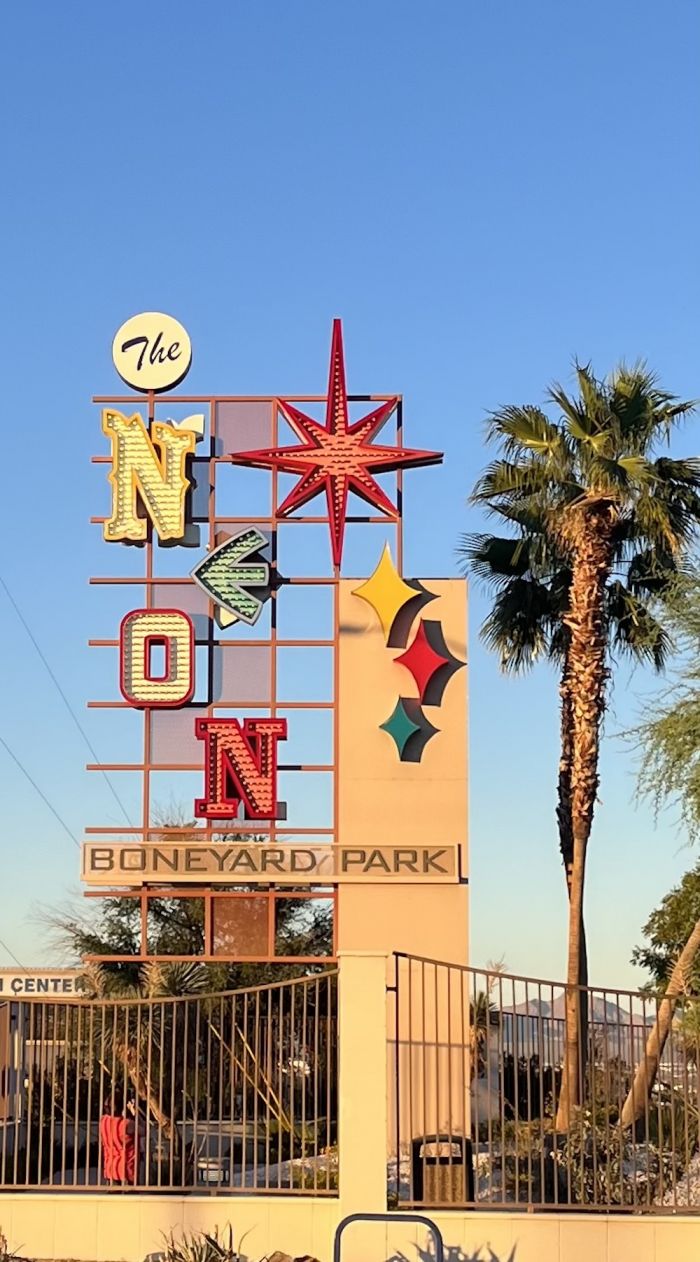
Many popular country ballads have been sung about driving through the night, into the light, hoping to find the way home.
These thoughts, combined with our mother’s oft-told story, came to bear upon our awareness as we walked through the Las Vegas Museum Boneyard.
Years ago, our Mom broke with the past, leaving the dark cold of a Midwest Winter, as she drove her old Ford to southern California. As she recounted, one especially dark night she drove through St, George, Utah, over an incline, when suddenly she saw the distant, twinkling, neon lights of Las Vegas. When she saw those lights, she intuitively knew everything would be OK, for as she said, the neon lights made her feel safe, as she said, “driving toward those lights was my salvation.”
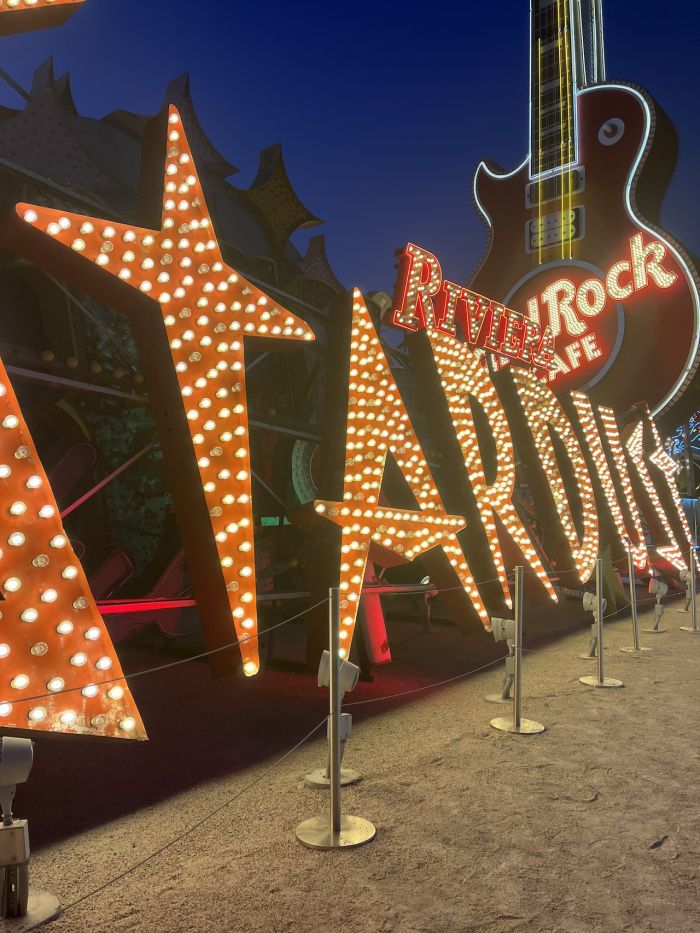
We had not thought of this story for many years until we went to The Neon Museum, in the Neon Boneyard-- full of historic Las Vegas neon signs and others, all sparkling in the early evening.
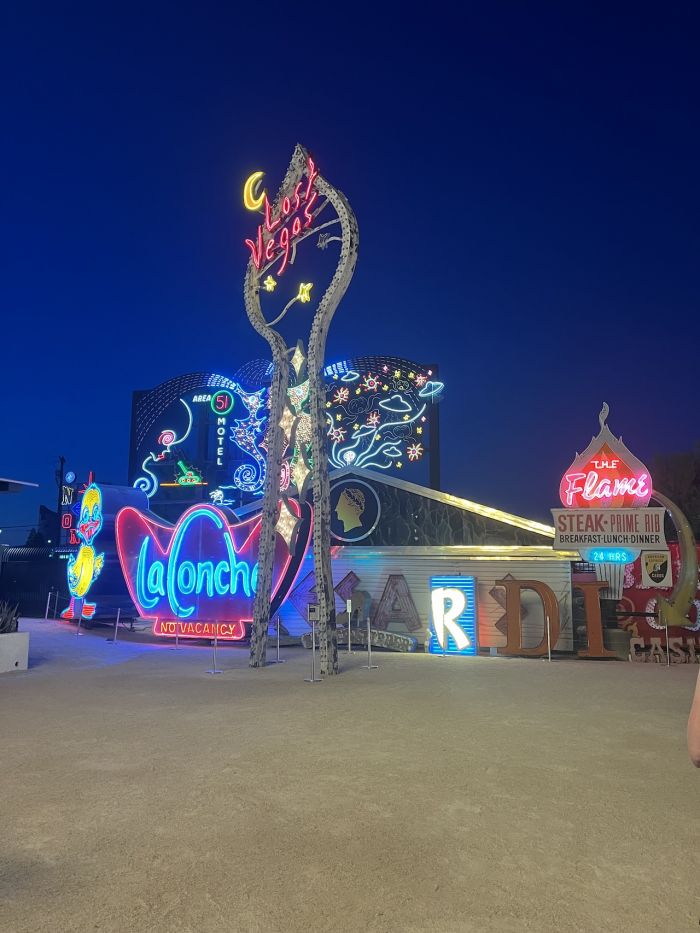
The Neon Museum is a non-profit 501 (c) 3 organization, dedicated to collecting, preserving, studying, and exhibiting iconic Las Vegas signs for educational, historic, arts, and cultural enrichment. The Neon Museum campus has three parts: the outdoor exhibition space known as the Neon Boneyard Main Collection, the Neon Boneyard North Gallery, which houses additional rescued signs, and a Visitors’ Center housed inside the former La Concha Motel lobby. Each sign has history, and as such, has a soul -- combining great signs with great design: designage, as it were.
The Main Boneyard contains more than 250 unrestored signs which are, at sunset, illuminated with ground lighting. Other numerous restored signs are on all the time. As we walked through the Museum, we mused on its unique, one-of-a kind, only-in-Las Vegas identity.
But there was something else about those elderly yet lively signs that, as the night grew darker, became more intense, but in contrast and oddly, more youthful. The Moulin Rouge sign especially became more neon Flamingo pink, the Yucca Motel sign became a more mobile, brilliant yellow. The Stardust sign twinkled, and the iconic Hard Rock Café Guitar’s neon light edges started moving up and down, the guitar reaching high into the dark Vegas night. And for other signs, their crackly electric neon voices punctured the evening dark.
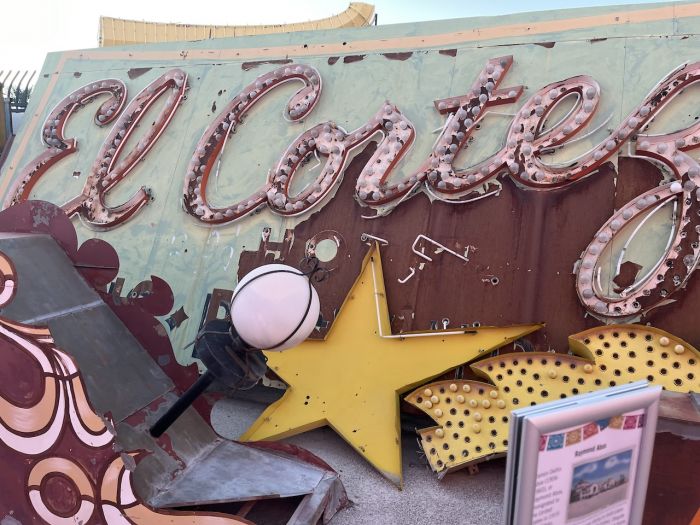
On a more historic plane, the neon sign, conceptualized in the 1800’s, became part of many contemporary landscapes: Los Angeles, Paris, and Germany, to name just three. But it was in the high desert of Las Vegas, a solitary desert place where, until about 1940, not much was there. Las Vegas was built originally as a railroad stop, but due to the building of the Hoover Dam, eventually became a landscape of luminosity, due in part to the colorful, large neon signs. The Neon Museum is the only place in the Mountain West, thus far, that displays this type of old neon as well as more contemporary signage. There is artistry in these signs, and the relation of this signage to the culture of Las Vegas is formidable, yet nuanced.
According to Wikipedia, a major impetus behind the collecting of these signs was the loss of the iconic sign from The Sands; after it was replaced with a new sign in the 1980s.
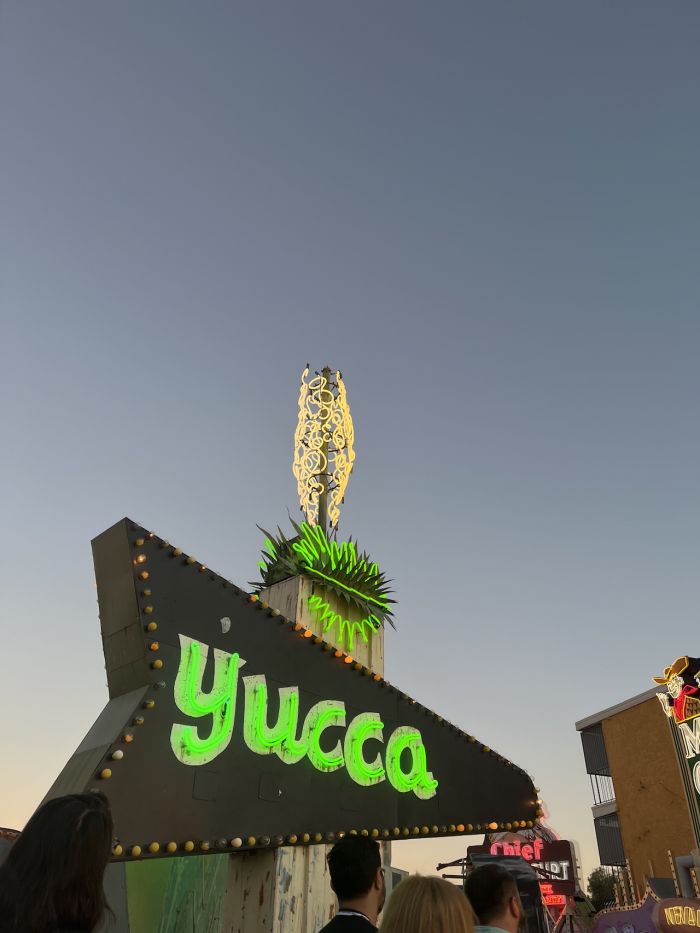
There was no place to store the massive sign, and it was scrapped. But, after nearly 10 years of collecting signs, the Allied Arts Council of Southern Nevada and the city of Las Vegas worked to create a museum to house and care for the saved signs. It officially opened in November 1996, when the Neon Museum restored and installed the Hacienda Horse & Rider sign at the intersection of Las Vegas Boulevard and Fremont Street. However, access to the collection was provided by appointment only. The officials quickly learned how popular signage was, as attendance was approximately 12–20,000 during this time. They also learned that people cared about Las Vegas history, as a portion of the Las Vegas story and culture lay in the design/signage – designage-- dimension. The Neon Museum is located on Las Vegas Boulevard, south of the Cashman Center and within the Las Vegas Cultural Corridor.
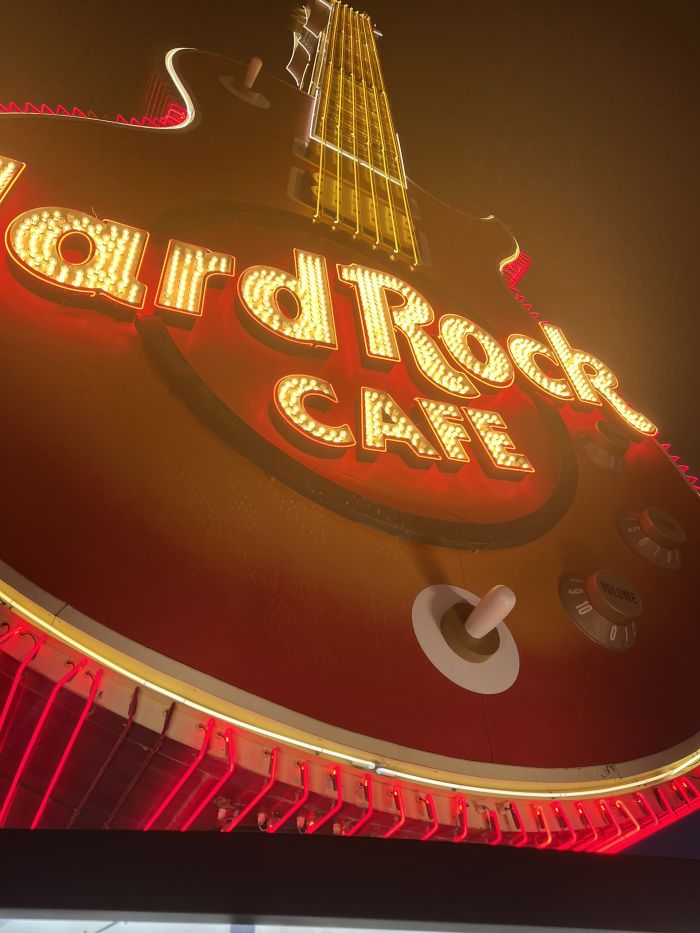
Walking through the Neon Museum Boneyard at twilight is one of those memorable experiences that combine past with present, through the great design in neon designage. The lighted past is palpable here, yet its past is friendly and welcoming. It beckoned then, as it does now as we still move toward the light.

Susan Kime
Susan Kime's career combines publishing, journalism and editing. She was the Destination Club/Fractional Update Editor for Elite Traveler, and senior club news correspondent for The Robb Report's Vacation Homes. Her work has been published in Stratos, Luxury Living, European CEO, The London Telegraph, Caviar Affair, ARDA Developments, and Luxist/AOL. She was the Editor-in-Chief of Travel Conno...(Read More)










